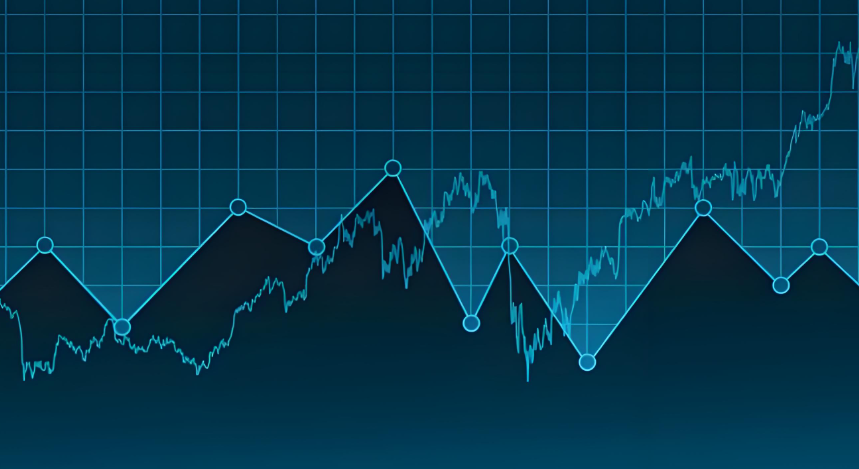The financial markets continue to draw significant attention as various sectors react to economic indicators and corporate earnings. As we delve into the latest news from February 12, 2023, we see mixed signals emanating from the pre-market trading environment in the United States. All three major stock indices—DOW, S&P 500, and NASDAQ—are showing a divergence, with futures slightly down for the DOW and S&P but a minimal uptick for NASDAQ, underscoring the volatile atmosphere typical of the current economic landscape.
Across the Atlantic, European markets reflected a somewhat more stable outlook. Germany’s DAX index is up by 0.24%, pulling in positive momentum along with the UK’s FTSE 100, which clungs on to a slight gain of 0.07%. Meanwhile, France’s CAC 40 and the pan-European STOXX 50 index also displayed mild improvements, albeit by minimal margins. This regional strength contrasts with the fluctuating sentiment in the US markets, marking an interesting juxtaposition in global financial dynamics.
The energy markets are witnessing some pressure as crude oil prices dipped, with WTI (West Texas Intermediate) falling by approximately 1.24%, settling at around $72.41 per barrel. Similar trends were observed in Brent crude, which decreased by 1.01%, pricing at $75.22 per barrel. Such declines in crude prices can often signal either the seasonal adjustments in demand or broader economic concerns, factors that traders will be monitoring closely.
Perhaps more crucially, the inflation landscape in the US is poised for scrutiny as the Consumer Price Index (CPI) data is set to be released. Analysts are anticipating that inflation may stay elevated beyond the Federal Reserve’s target of 2%. This upcoming data release particularly on January's CPI is believed to show either minimal improvement or, in some cases, stagnation when compared to levels seen in December 2024. Expectations are mixed, as some segments of the financial markets signal potential for continued price increases in the coming years based on forecasts of inflation expectations.
Federal Reserve Chairman Jerome Powell recently made headlines by attending the semi-annual monetary policy hearing before the House Financial Services Committee. During his testimony, he emphasized the resilience of the US economy, noting the continued strength in consumer spending, a rise in business investments, and the overall expansion in both manufacturing and services sectors. Powell's comments reflect a cautious optimism yet acknowledge the risks that might impact economic growth. He refrained from commenting directly on trade policies but recognized that uncertainty in that domain might influence investment decisions within corporate America.

However, this optimistic economic narrative faces headwinds, especially from voices like former Treasury Secretary Lawrence Summers. Summers, who previously warned of potential inflation risks, raised the alarm once again, suggesting that we may be on the brink of another inflation surge. He urged the Federal Reserve to remain vigilant about price pressures and hinted at a possible end to rate cuts, with subsequent rate hikes being a real possibility. The state of the labor market, buoyed by last week’s robust job numbers indicating significant wage increases, paints a complex picture of underpinning inflation as consumer prices could escalate even before government interventions are made. In this context, it is crucial for investors to be adept at navigating the labyrinth of economic data and market sentiment.
Shifting gears to company-specific news, Barrick Gold recently reported strong quarterly earnings, showcasing an optimistic outlook for 2025. The firm recorded a non-GAAP earnings per share (EPS) of $0.46 for the fourth quarter of 2024—exceeding expectations. Revenues were impressive at $3.65 billion, reflecting a year-on-year growth of 19.3%. Notably, the company’s stock repurchase program saw a boost, signaling confidence in the firm’s market position. Furthermore, projections suggest gold production in 2025 will land between 3.15 to 3.5 million ounces, which is promising for stakeholders looking for stability in the often volatile resources sector.
However, not every company is faring as well. Lyft's recent forecasts for first-quarter bookings were disappointing, indicating the impact of adverse weather on demand for ride-sharing and bike rentals. They expect bookings in the range of $4.05 billion to $4.2 billion, falling short of Wall Street's expectations. Despite announcing a stock buyback program worth $500 million, the market response has not been favorable, reflecting the intricate challenges that exist within this service-oriented sector.
On a contrasting note, DoorDash exhibited a stellar fourth-quarter performance, rebounding with a revenue growth of 25%, netting $2.9 billion, and turning a profit of $141 million compared to a loss in the previous year. This rebound highlights a robust demand segment within the tech-driven delivery sector, underlining the broader consumer appetite as seen in Uber's recent delivery performance as well.
In the semiconductor space, Advanced Micro Devices (AMD) communicated a decrease in preliminary Q2 performance expectations but remains bullish on longer-term targets, aiming for revenues of $40 billion by 2026. While immediate projections show a slight decline, the company’s long-term growth strategy keeps investors' interest alive amidst shifting market dynamics.
One exciting narrative is the emerging competition among tech giants with AI developments. Recent reports suggest that Meta could be on the verge of acquiring FuriosaAI, a startup focused on AI chip design. This move could position Meta to lessen dependence on existing suppliers like NVIDIA amid ongoing chip shortages—an illustrative case of how competitive pressures are reshaping decisions in Silicon Valley.
The financial markets, with their dazzling array of sectors and metrics, encapsulate the confluence of global economic dynamics and individual corporate narratives. As we sift through earnings reports, CPI data, and experts’ opinions, we become acutely aware that each tick in the financial markets tells a story—one that intertwines with broader public policy, consumer sentiment, and the relentless march of technological innovation. In a constantly evolving landscape where uncertainty is a constant companion, the ability to interpret and adapt will determine success in both investing and economic policymaking.